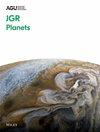Sub-Milankovitch Signals in the Northern Polar Layered Deposits of Mars
Abstract
Our understanding of the paleoclimate of Mars and the dominant forcing functions that drive large-scale changes largely remains a mystery. However, the Martian Polar Layered Deposits (PLD) offer a promising avenue for unraveling the planet's recent paleoclimate history. Despite recent progress to detect a climate signal in the PLD, definitive evidence of a correlation between the stratigraphic record and Mars' recent orbital history remains elusive. We utilized new and updated techniques, including high-resolution stratigraphic reconstruction from High Resolution Imagine Science Experiment stereo imagery and digital terrain models, combined with a technique of variable dip correction to account for three dimensional bedding orientations. Signal processing methods, such as wavelet and Fourier analysis, were applied to perform detailed time-series analysis. These analyses revealed a quasi-periodic signal indicative of fine bedding at a scale of approximately 2 m. Based on previously proposed deposition rates, these fine layers appear to correspond to timescales centering around 4,000 years. This suggests that the meter-scale layers may not be the result of orbital forcing and hint at an unknown sub-Milankovitch climate forcing mechanism. We discuss potential exogenic causal mechanisms, such as cyclic variations in solar activity, and endogenic factors, including large-scale changes in dust distribution. Understanding the formation processes of these fine layers may significantly enhance our knowledge of Martian climate history and its driving forces.

 求助内容:
求助内容: 应助结果提醒方式:
应助结果提醒方式:


